BOTTOMS UP!
Step aboard a Maine windjammer before a cruise and you’ll see that all is ship-shape. The paint and varnish gleam, the sails are neatly furled, and the cabin linens are crisp and tidy. What you won’t be able to see though is all the work that’s also been done on the hull of the boat below the water. Maintaining the ship’s “bottom” is a major part of the spring’s workload.
Every spring each Maine Windjammer Association vessel heads to a local shipyard to be hauled out of the water. How do you get a 100-ton sailing vessel out of the water? There are a few different methods.
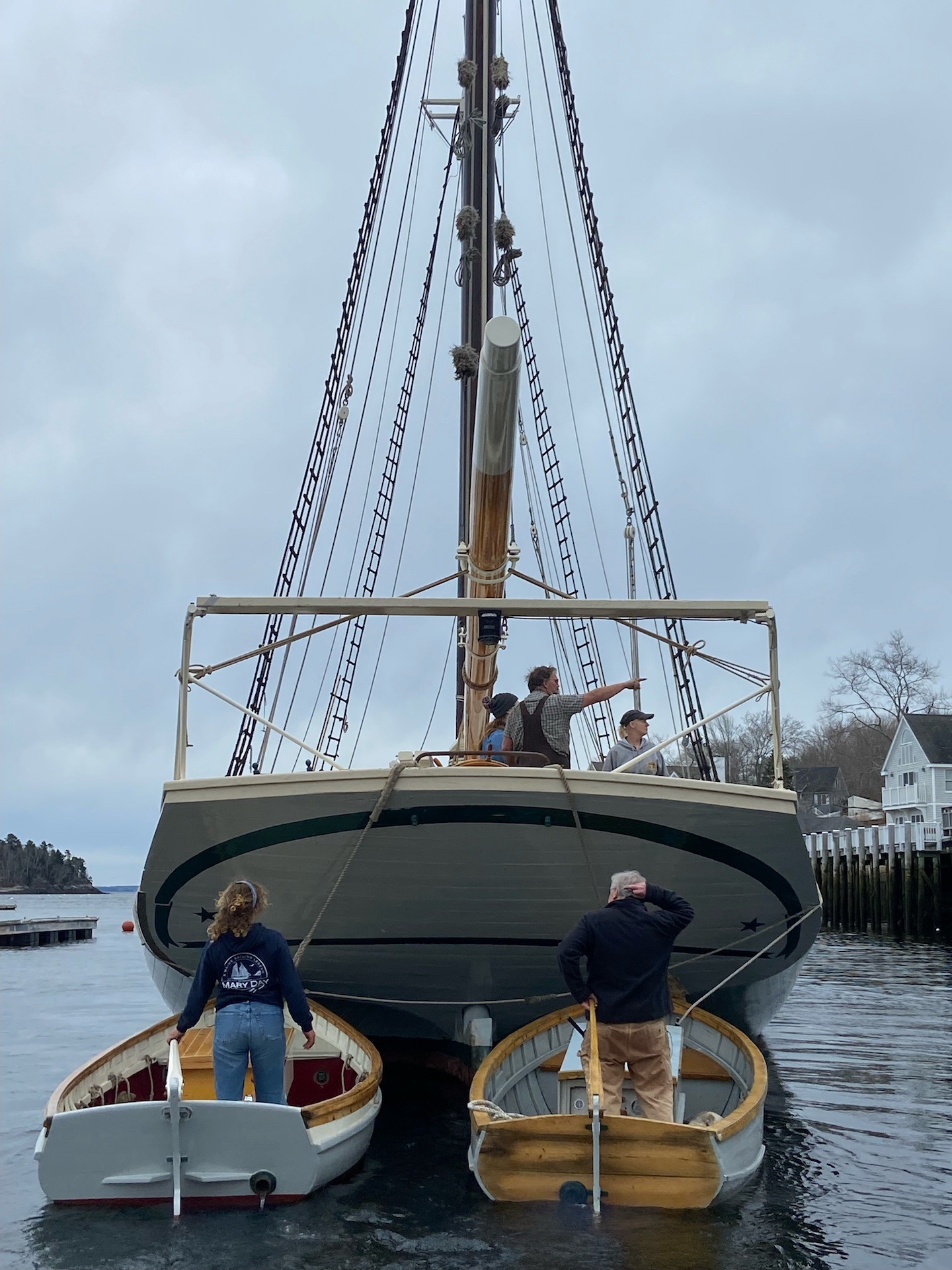
Schooner Mary Day pushes down to North End Shipyard in Rockland. She’s getting a little extra boost from the addition of a second yawl boat.
At North End Shipyard in Rockland, there’s a marine railway. To begin the process, the large wooden “cradle” (pictured below) slides along a railway track that runs underwater. Once the cradle is partially submerged the captain slowly drives the vessel onto the cradle, centering the vessel between the two sides. Next, a scuba diver heads underwater to check that the boat is being properly supported by the wooden blocking underneath. Each vessel has a different hull shape and needs a different set of blocking. Once the boat is secure, the cradle and boat are hauled up the track via a massive winch onto the railway.
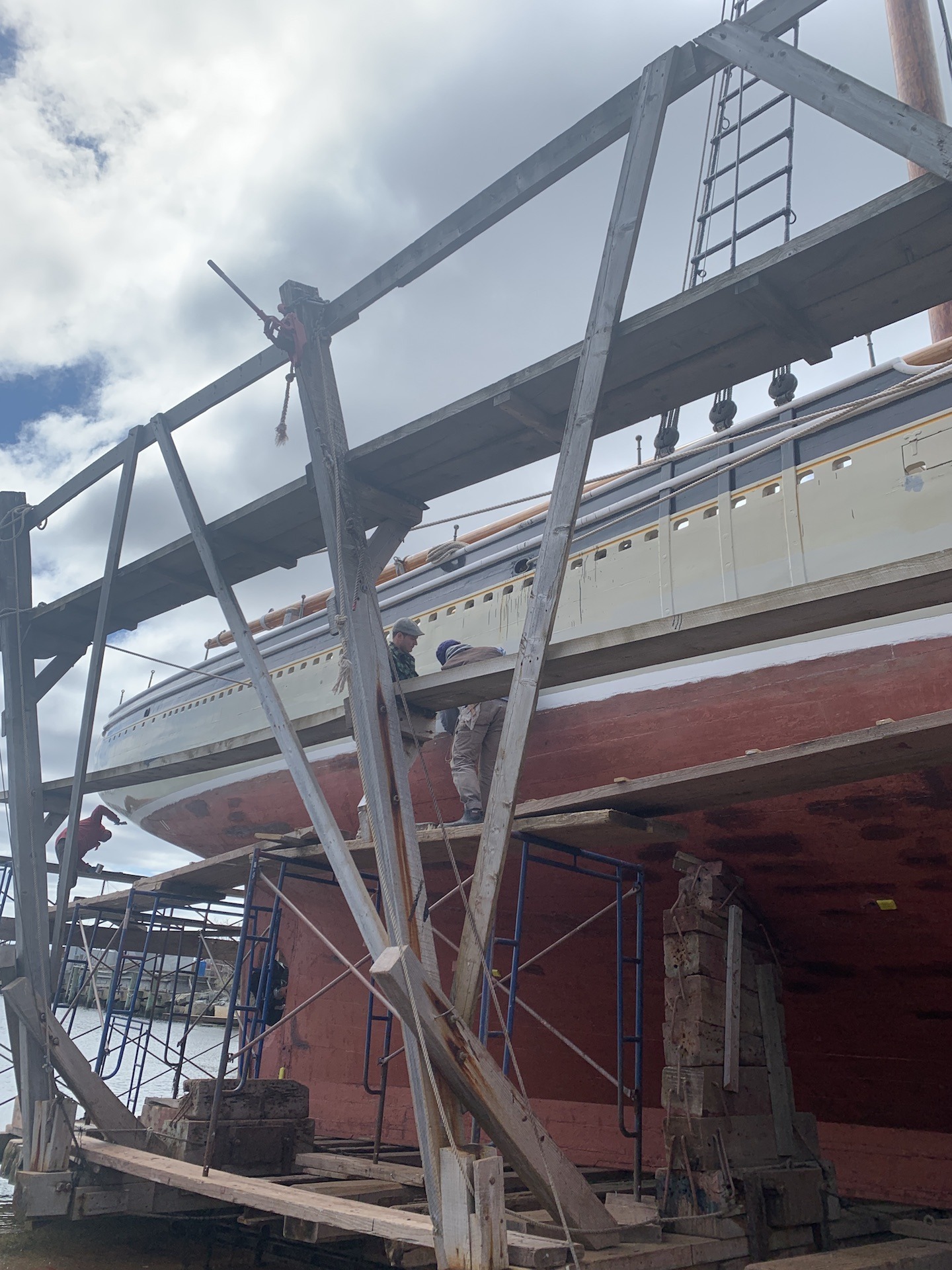
Some windjammers such as the steel-hulled Angelique haul out at Front Street Shipyard in Belfast using a travel lift. The lift is essentially a specialized crane. The travel lift’s frame is positioned over the boat in a lifting well and the lift’s slings pass under the boat’s hull from one side to the other. The lift raises the boat and wheels it ashore!
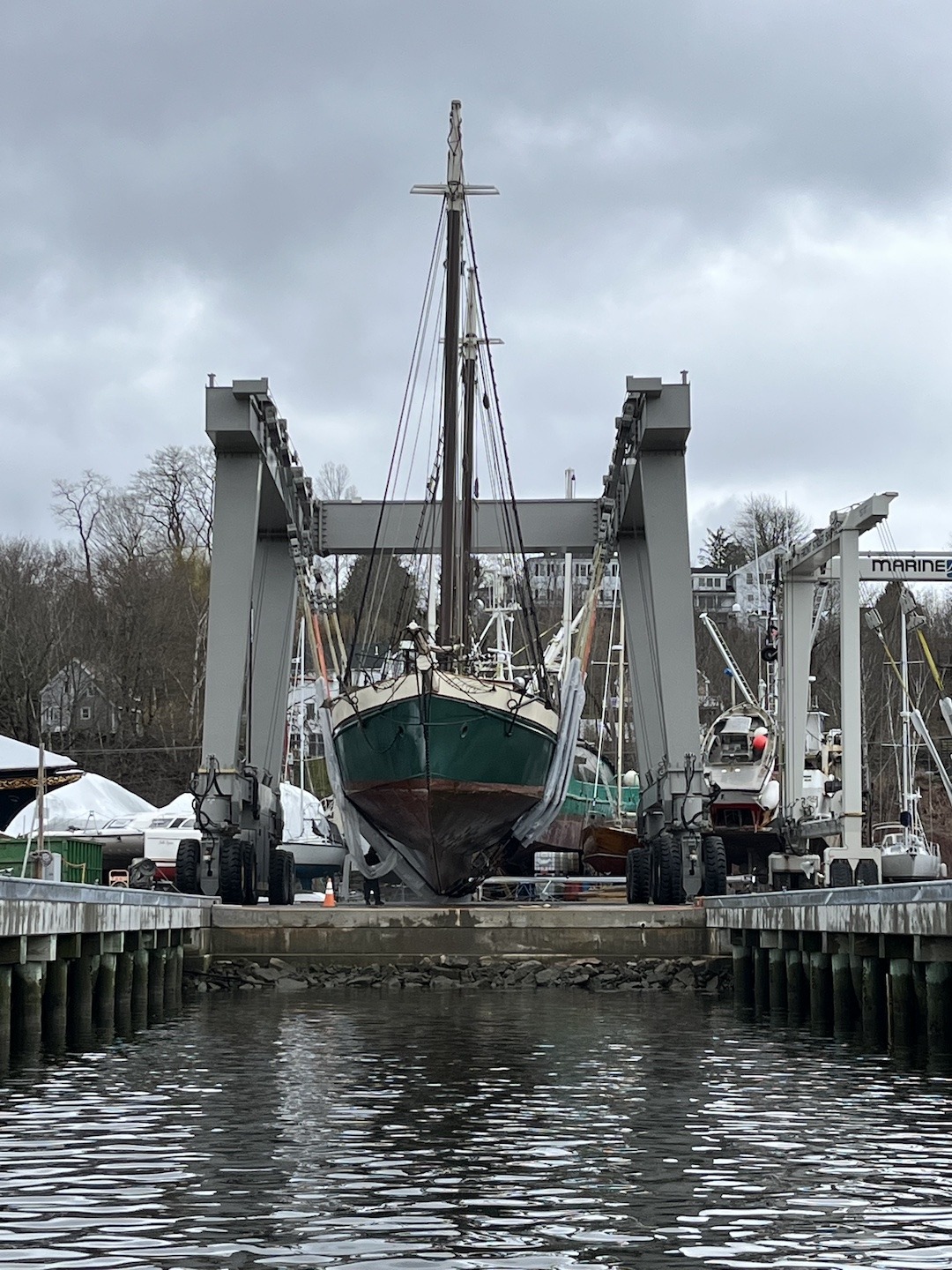
After a year in the water, there’s usually a nice layer of barnacles, seaweed, and grime which get pressure-washed off. Removing all this grime can give the boat back a half-knot of speed! The bottom is inspected for any soft spots or missing putty. The seams may get re-caulked and puttied. Planks may be replaced. The hull is inspected once every two years by the Coast Guard. (Here’s some more information about the Coast Guard inspection process!). After a few days’ work, the bottom is repainted and the boat is ready to be launched. Time for a day off!
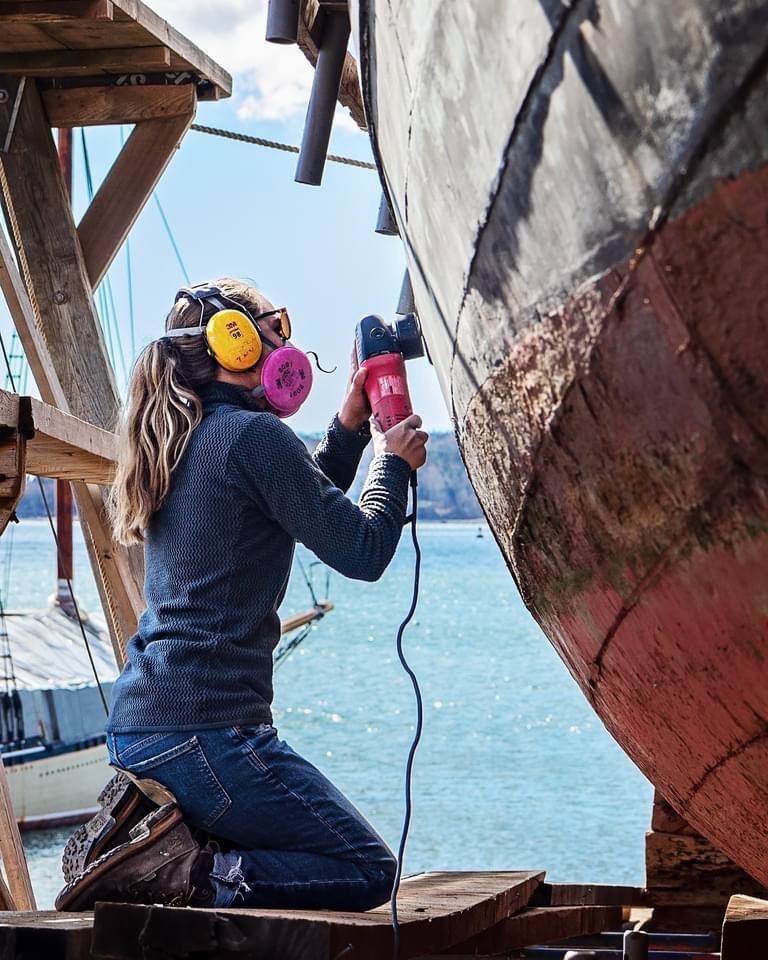
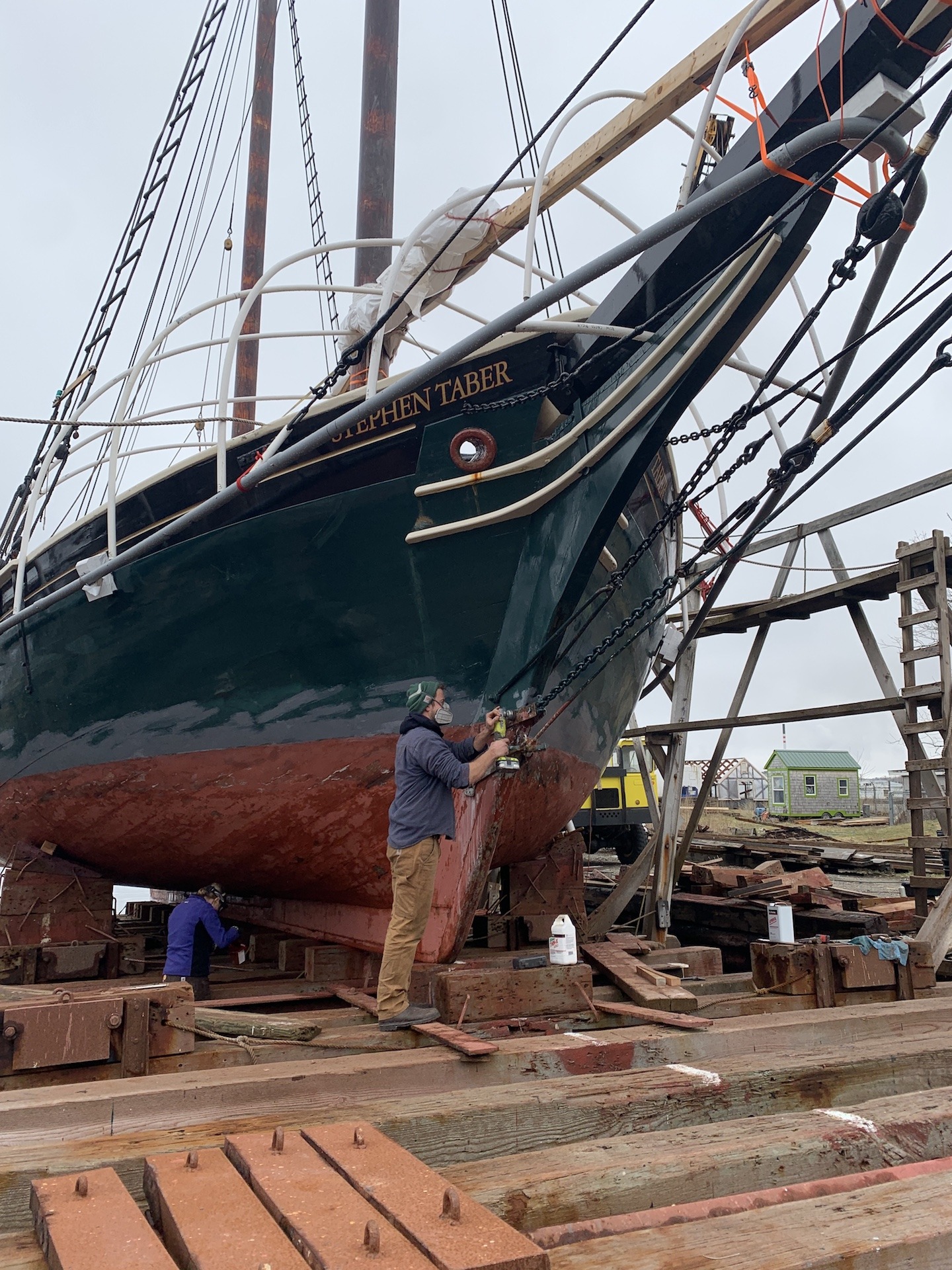
Categories: Behind the Scenes, Maine Windjammers
Tags: Maine Windjammer Association, Maine windjammers, Schooner J. & E. Riggin, Schooner Stephen Taber, Windjammer Angelique



